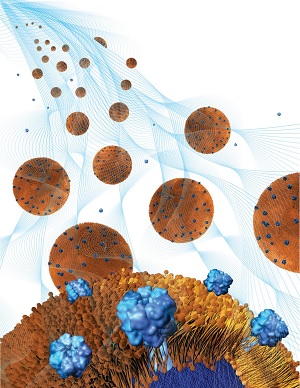 |
| Depiction of toxin-absorbing nanoparticles in a hydrogel--Courtesy of UCSD |
UCSD researchers have developed a hydrogel that contains toxin-absorbing nanoparticles--what they are calling nanosponges--that could eventually treat skin and wound conditions caused by methicillin-resistant Staphylococcus aureus, or MRSA.
A nanosponge is a nanoparticle coated in a red blood cell membrane, which disguises the particle and attracts toxins to remove them from the bloodstream. Normally, they would move around the body, but the UCSD team designed a hydrogel to hold them in place over a skin infection or wound. The one they came up with can hold billions of nanosponges per mililliter, according to a university report.
In mice, the treatment kept the size of skin lesions caused by MRSA smaller than untreated ones. The removal of the toxins prevented further damage to blood, skin and muscle tissues, lead researcher Liangfang Zhang said.
They also worked when injected under the skin--almost 80% of the nanosponges remained at the injection site, absorbing toxins.
"One way to treat these infections is to remove the toxins, which act as a weapon and a defense shield for the bacteria that produce them," Zhang said in a statement. "We hypothesize that without the toxins, the bacteria become significantly weakened and exposed, allowing the body's immune system to kill them more easily without the use of drugs."
- here's the release